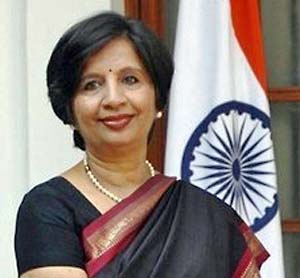The Kashmiri American Council, based in Washington D.C. and headed by Ghulam Nabi Fai, has been established by Pakistan’s ISI to influence public opinion about Kashmir, according to the FBI. Fai is of Kashmiri origin but a US citizen. For almost two decades, the ISI has been channeling funds through Fai to make contributions to American political leaders by way of campaign contributions to lobby against India in the United States Congress, hold international seminars to launch attacks on the government of India regarding alleged human rights violations in Kashmir and print propaganda pamphlets. A total of US$ 4 million was allegedly funneled by the ISI to the U.S. to influence political leaders with a view to changing U.S. policy on Kashmir.
 All of these activities were in violation of U.S. laws but the authorities appear to have chosen to ignore them, possibly because of Pakistan’s status as an ally in the so-called global war on terror and perhaps as a quid pro quo for the Pakistan army and the ISI keeping quiet about similar CIA activities in Pakistan. The killing of Osama bin Laden at Abbottabad in May this year irrevocably altered the cozy relationship between the ISI and the CIA. This is what led to the arrest of Fai and his fellow conspirator Zaheer Ahmed on July 19th. Their prosecution will once again reveal the perfidious and duplicitous nature of the Pakistan army and its rogue intelligence agency – the ISI.
All of these activities were in violation of U.S. laws but the authorities appear to have chosen to ignore them, possibly because of Pakistan’s status as an ally in the so-called global war on terror and perhaps as a quid pro quo for the Pakistan army and the ISI keeping quiet about similar CIA activities in Pakistan. The killing of Osama bin Laden at Abbottabad in May this year irrevocably altered the cozy relationship between the ISI and the CIA. This is what led to the arrest of Fai and his fellow conspirator Zaheer Ahmed on July 19th. Their prosecution will once again reveal the perfidious and duplicitous nature of the Pakistan army and its rogue intelligence agency – the ISI.
The international conferences organized by the KAC were attended by several influential Indians as well, among them Mr. Subramaniam Swamy, a member of Parliament and Mr. Dilip Padgaonkar, a former journalist who is now a member of the prime minister’s task force on Kashmir. Both of them have denied knowledge of Fai’s background and his affiliation with the ISI.
There are other such organizations which are supported by the ISI in Europe and elsewhere. They are usually NGOs that support the Kashmiri people’s ‘right to self determination’. The never tell the paid audiences that gather for their propagandist conferences that free and fair elections have been held in Jammu and Kashmir continuously at least since the mid-1990s and that a people’s government has been in power. On the contrary, Pakistan Occupied Kashmir is governed directly by Islamabad and the people of POK are treated like second class citizens.
According to the Washington Post, “News of the case reverberated through Pakistan’s military and intelligence apparatus on Wednesday, where many suspect the timing of the charges was in retaliation for recent expulsions and arrests of Americans in Pakistan.” However, the FBI has denied any such linkage. The arrests are certainly likely to lead to yet another dip in US-Pakistan relations in the short term. However, as long as American troops remain in Afghanistan in large numbers and their supply lines continue to pass through Quetta and Peshawar, the U.S. has no option but to keep the Pakistan army and the ISI humored in its own national interest.

 Although a number of reasons can be found to explain why the Indo-US relationship is currently in a parlous condition. The biggest blow comes undoubtedly from the elimination of the U.S. from the MRCA competition, quite probably for purely technical reasons. But there is another side to the Nirupama story. That is the story of the U.S. ambassador in New Delhi. After the performance of absolute cracker – Jacks like Robert Blackwill, Frank Wisner, Dick Celeste and many others, the performance of the current US ambassador in Delhi has been entirely forgettable. If it meant much to the U.S. to get short listed in the MRCA competition, one wouldn’t have guessed so from the activities or the lack of them at Roosevelt House. The U.S. ambassador’s office and residence was constantly buzzing during the time of the U.S. nuclear deal, but that was probably a stunning one – off performance – when the U.S. embassy mustered a huge public relations campaign on behalf of the deal, and followed it up with a command performance at the NSG waiver at Geneva.
Although a number of reasons can be found to explain why the Indo-US relationship is currently in a parlous condition. The biggest blow comes undoubtedly from the elimination of the U.S. from the MRCA competition, quite probably for purely technical reasons. But there is another side to the Nirupama story. That is the story of the U.S. ambassador in New Delhi. After the performance of absolute cracker – Jacks like Robert Blackwill, Frank Wisner, Dick Celeste and many others, the performance of the current US ambassador in Delhi has been entirely forgettable. If it meant much to the U.S. to get short listed in the MRCA competition, one wouldn’t have guessed so from the activities or the lack of them at Roosevelt House. The U.S. ambassador’s office and residence was constantly buzzing during the time of the U.S. nuclear deal, but that was probably a stunning one – off performance – when the U.S. embassy mustered a huge public relations campaign on behalf of the deal, and followed it up with a command performance at the NSG waiver at Geneva.